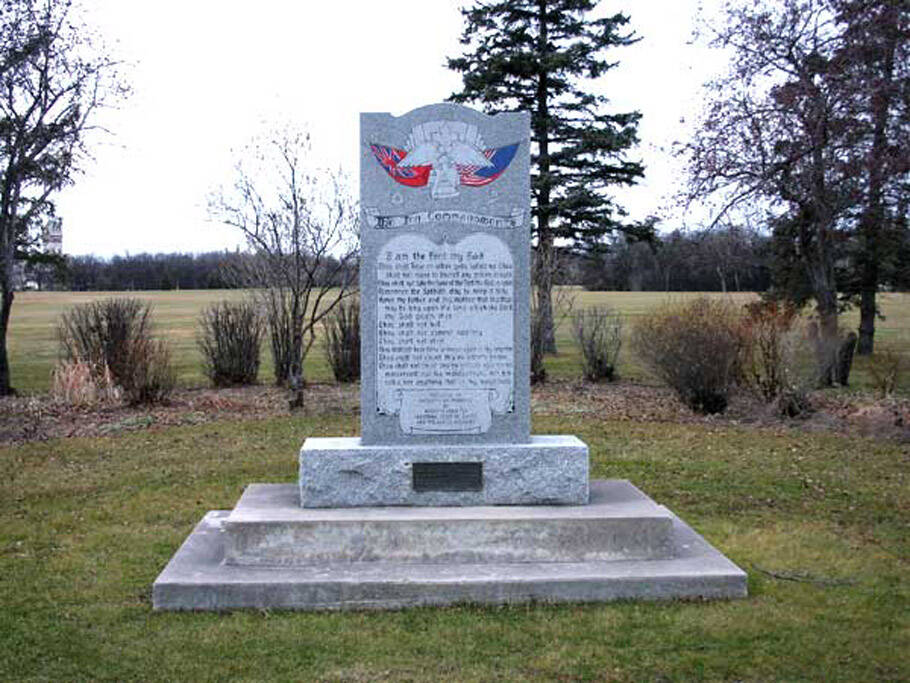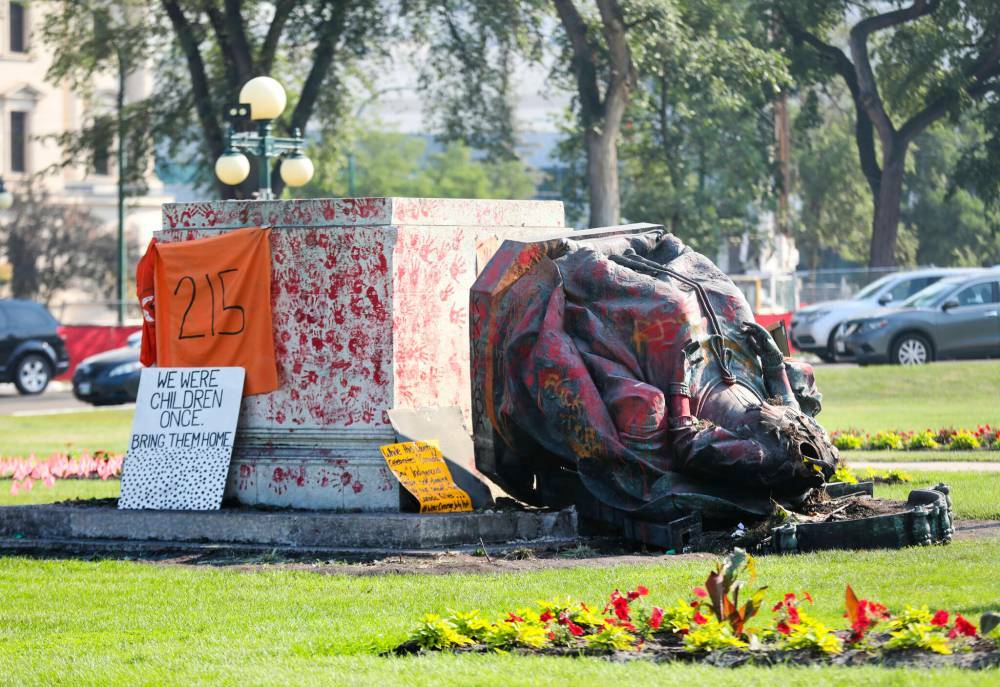Is it time for Winnipeg to establish its own island of misfit monuments?
Recently, Winnipeg philanthropist Gail Asper started lobbying to find a new home for a monument devoted to the Ten Commandments that was removed from Assiniboine Park in 2017 to make way for construction of the Leaf, the park’s elaborate horticultural installation.
Although she was focused on the Ten Commandments monument, the broader question Asper raised is whether the symbols of bygone eras — ones that are removed out of concern for who or what they stand for — could and should continue to live on in some other context.

CITY OF WINNIPEG
Ten Commandments commemorative monument.
Asper, who called the removal of the Ten Commandments monument “ill-advised, hurtful and wrong,” suggested it could be moved to a section of the park where monuments to other faiths could also be displayed.
On this point, Asper may be onto something.
Imagine an island (or park or museum) of historically and morally ambiguous artifacts where things can continue to be exhibited with proper modern context. It’s an interesting idea, but one that has not yet come to fruition.
The question about what to do with outdated monuments is hardly a Winnipeg problem; communities all over the world are struggling with whether to remove certain monuments and, if they are removed, what to do with them.
More than 130 Confederate monuments were removed in the year following 202o’s seismic Black Lives Matter uprising, but few have found permanent homes.
It’s a similar situation in Canada where six statues of our first prime minister, Sir John A. Macdonald, have been removed, along with another half dozen or so of other figures associated with the residential school system, British monarchs and explorers.
To date, most remain in storage.
In Winnipeg, statues of Queen Elizabeth and Queen Victoria were vandalized on Canada Day 2021. The statue of Queen Elizabeth was repaired and returned to its pedestal in 2023, but the statue of Queen Victoria was damaged beyond repair and has not been replaced.
Even though these decisions are complex, the renaming of something — road, school, park — is a more straightforward matter for public officials to navigate. That was certainly the case when the city recently renamed streets that carried the name of Bishop Vital Grandin, acknowledged as one of the architects of the residential school system.
The removal of a monument or statue, however, means the government has the lingering burden of what to do with the offending artifact. Notwithstanding Asper’s impassioned belief in its universal appeal, the Ten Commandments monument is a perfect example of this dilemma.
The monument was erected by the Fraternal Order of Eagles, an organization founded in Seattle near the end of the 19th century that has a rather obscure mission and background.
Founded by a group of theatre owners, the organization has served partly as a benevolent society for those in performing arts, and partly as a moral advocate. It claimed credit for establishing Mother’s Day, and was recognized as prominent supporters of the creation of the U.S. Social Security system but for most of its existence, the order shunned women and minorities from its membership.
The monument in Winnipeg, erected in the mid-1960s, was actually part of a continental campaign started by the order in the 1940s to support one its members, a prominent judge, who was lobbying to have copies of the Ten Commandments posted in juvenile courts.

CITY OF WINNIPEG
Ten Commandments commemorative monument.
Taken together, the subject matter and the background of the organization that bestowed the monument on the city do not make a compelling argument for retaining it in the park. At least, not without proper context.
However, what if we had a place where historically offensive or ambiguous items could be “retained and explained” as some historians have argued?
This could be done by keeping monuments in place with detailed historical context included on a sign or plaque. For those who are most offended by the monuments, and thus the most motivated to have them removed, this might be an unacceptable compromise.
The much better idea is to move the monuments to a place where context can be carefully and accurately curated. We have many museums in the world now — including the Canadian Museum for Human Rights in Winnipeg — that have the “retain and explain” concept built into their mandates.
In the United States and the United Kingdom, it has been difficult to find a museum to retain controversial monuments because they are too big and too heavy for the facilities. In these cases, an outdoor monument park or garden would seem to be the best option.
If we are to keep the Fraternal Order of Eagles monument to the Ten Commandments — and there is a strong argument for allowing it to remain in storage — it should be in a dedicated space where it, and other similar artifacts, can be exhibited with the history of the artifact, its subject and its sponsors.
We need to remember the removal of a monument does not, in and of itself, resolve the historic crimes committed by those who were once honoured by them.
In light of that reality, we must preserve these items so we can continue to be reminded about how far we’ve come, and how far we have left to go — but only alongside other misfit tributes.
dan.lett@winnipegfreepress.com

Dan Lett
Columnist
Dan Lett is a columnist for the Free Press, providing opinion and commentary on politics in Winnipeg and beyond. Born and raised in Toronto, Dan joined the Free Press in 1986. Read more about Dan.
Dan’s columns are built on facts and reactions, but offer his personal views through arguments and analysis. The Free Press’ editing team reviews Dan’s columns before they are posted online or published in print — part of the our tradition, since 1872, of producing reliable independent journalism. Read more about Free Press’s history and mandate, and learn how our newsroom operates.
Our newsroom depends on a growing audience of readers to power our journalism. If you are not a paid reader, please consider becoming a subscriber.
Our newsroom depends on its audience of readers to power our journalism. Thank you for your support.